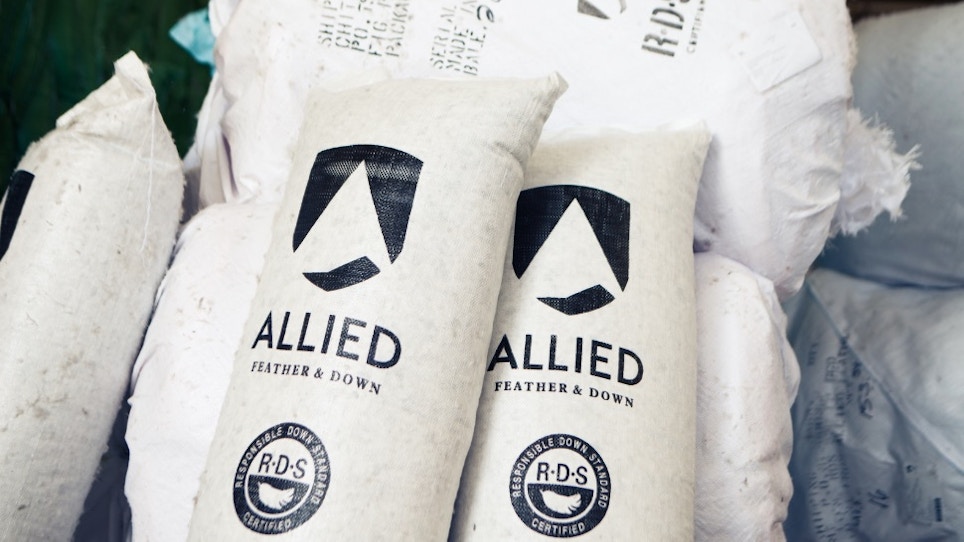Allied Feather and Down wants to help you educate consumers and retailers about how to purchase their next down jacket or sleeping bag. The following are common misconceptions regarding down and down products.
Higher fill power is better.
All things being equal, higher fill power down is warmer because it can trap more air (higher fill power corresponds to larger down clusters). However, heavier weight fabrics will compress a higher fill power down, removing the loft and, thereby, its ability to insulate. For these applications, a 700-fill power down works better and costs less than a 900-fill power down.
Baffle size also determines which down is best.
Using a higher fill power down in small baffles can be a waste of money. If the down cluster is too big, it will be compressed and not be able to do its job as it is put into the jacket. Again, a lower fill power will work better with smaller baffles and save money for all involved.
All down is pretty much the same.
Processing has a lot to do with the quality of the finished product. It’s easiest and most cost effective to wash down with harsh detergents and dry it quickly with high heat. This processing method, however, will remove most of the natural oils found in down that keep it pliable and resilient. If the down loses too much of its natural oil, it becomes brittle and will break down quickly in a jacket or sleeping bag, reducing performance and useful lifespan. ALLIED, for example, prides itself on processing down in such a way as to maximize its longevity and performance and, therefore, its value.
Down is not a feather.
Down clusters are three-dimensional spheres as opposed to a two-dimensional feather. Because they are three dimensional, down is able to create dead air space, which is effective at trapping heat. Feathers are unable to do this. They do provide protection for down the same way a waterproof shell will protect the down in your jacket, however.
Goose down is not necessarily better than duck down.
Both geese and ducks have down plumes and the original wisdom was that goose down is a superior product. While geese, which are larger animals than ducks, create larger plumes, fill power is fill power, and 700-fill power duck insulates just as well as 700-fill power goose down. Duck down is generally less expensive, as duck is a more common food source.
Not all down is ethically sourced.
Down is a byproduct of the meat industry. No one is raising geese or duck for their down, it’s simply not economically feasible. As a byproduct, it can come from animals that are humanely treated or from animals that may have been live plucked (rare) or force-fed for the Foie Gras industry. Look for down products that feature Responsible Down Standard (RDS) certification to make sure your down is ethically sourced.
Down is inferior to synthetic insulation in wet environments.
While this used to be true, hydrophobic down is now commonplace and will stay much drier, much longer than untreated down. You can now take advantage of down’s superior weight, warmth and compressibility, even in damp and rainy environments with confidence.
Caring for your down product.
With proper care, your down product can — and should — last a lifetime. One of the amazing benefits of down is its ability to retain loft and resiliency year after year, even with heavy use. When synthetic options start to degrade within a couple seasons, your down jacket can last for many years.
To wash your down product, simply follow these easy steps:
- Start by running a rinse only cycle without detergent to wet product.
- Wash in cold or warm water and if possible, add an extra rinse following the wash without detergent.
- Dry thoroughly on low heat. This may take several cycles. Many times, the exterior shell will feel dry but the down inside is still slightly damp. It is critical to dry completely and it is unlikely you would damage the down when using low heat. During drying, add three clean tennis balls to aid in breaking up the down and maximizing loft






